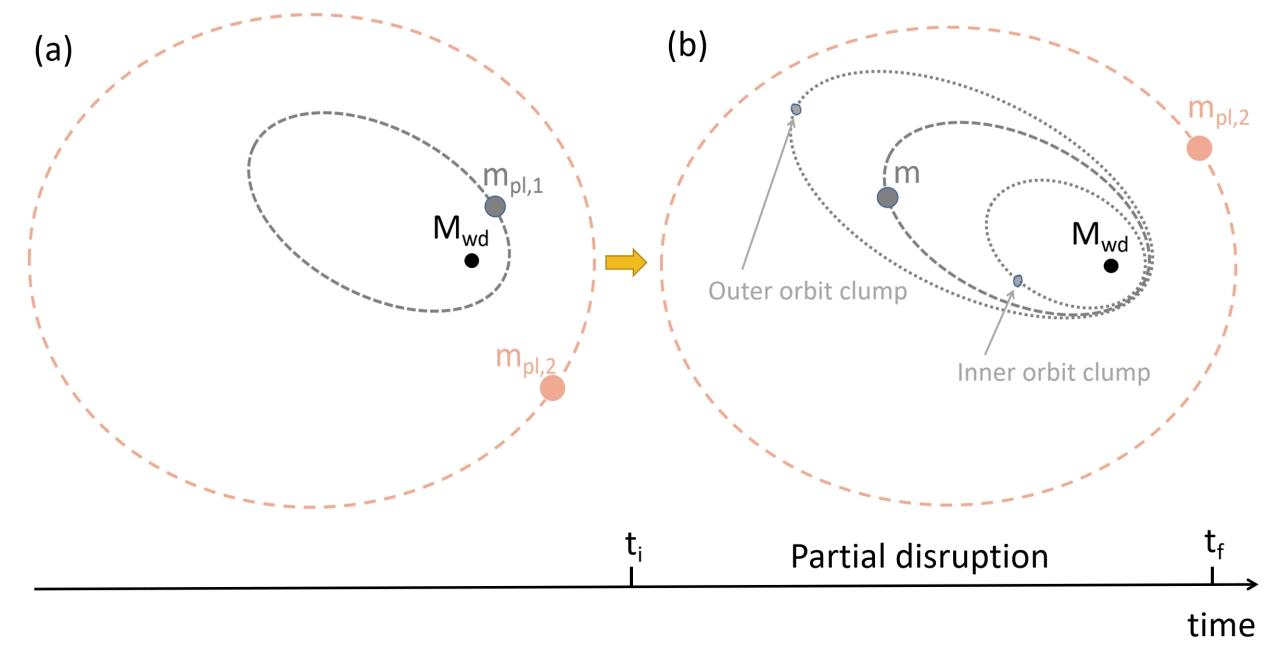Approximately 25-50% of white dwarfs have been found to exhibit metal pollution. It is commonly believed that the tidal disruption of planets surrounding a white dwarf may lead to the contamination of its atmosphere with metals. The proximity of these planets to the white dwarf could be influenced by gravitational perturbations from another distant planet or companion star. However, the dynamical characteristics of these perturbations and the specific processes involved in the partial disruption of planets remain insufficiently understood.-
Recently, Dr. Abdusattar Kurban from the pulsar research group at the Xinjiang Astronomical Observatory of the Chinese Academy of Sciences and his collaborators conducted a numerical study on the partial tidal disruption process of a planet surrounding white dwarf, thereby constraining the rate of material accretion.
The relevant findings were published in The Astrophysical Journal (ApJ, 2024, 974, 100).
The researchers proposed that the inner orbital planet in a three-body system composed of a white dwarf, an inner orbit planet, and an outer orbit planet undergoes periodic partial disintegration over long evolutionary timescales. The fragments generated are influenced by the gravitational perturbations of remnant planet, causing them to fall into the white dwarf within a relatively short period. This process results in the metal pollution of white dwarf stars.
The study indicated that the process of partial disruption can occur repeatedly over thousands of years. During the disruption, the iron content percentage and mean density of the remnant planet increase, ultimately transforming them into iron-rich or pure iron bodies. The findings revealed that this process depends on the initial orbital configuration of the planetary system and structural characteristics of the inner orbit planet.
Furthermore, the study suggested that the material accretion rate generated during these episodes of disintegration exceeds the observed accretion rates, implying that planetary disintegration may be a rare event.
This research is of significant importance for understanding the issue of metal pollution in the atmospheres of white dwarfs, as well as the internal structure and chemical composition of exoplanets.
Article Link:https://iopscience.iop.org/article/10.3847/1538-4357/ad73d3

The schematic diagram illustrating the orbital evolution of an inner orbit planet in a three-body system and the process of partial tidal disruption. (a) The orbital evolution prior to partial disruption and (b) the process of partial tidal disruption.